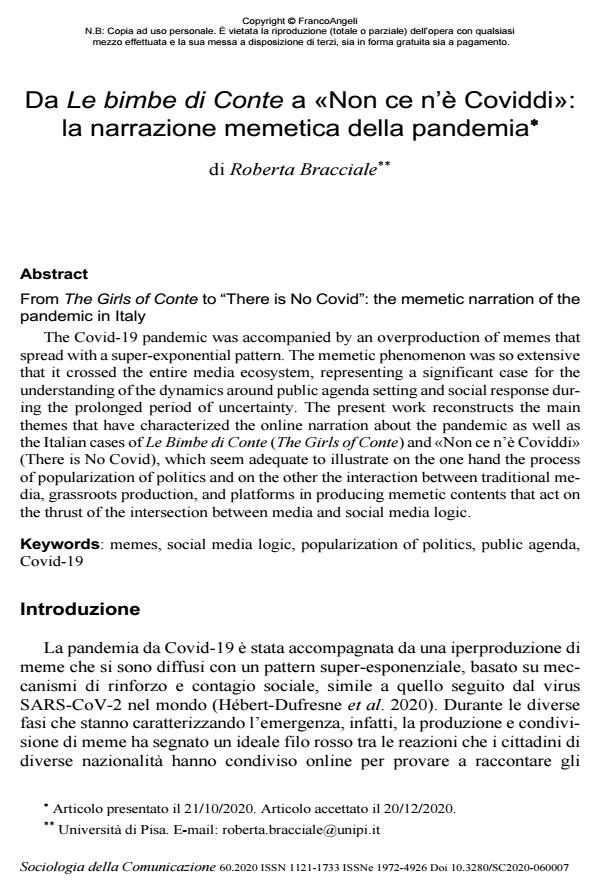Da Le bimbe di Conte a «Non ce n’è Coviddi»: la narrazione memetica della pandemia
Titolo Rivista SOCIOLOGIA DELLA COMUNICAZIONE
Autori/Curatori Roberta Bracciale
Anno di pubblicazione 2021 Fascicolo 2020/60
Lingua Italiano Numero pagine 15 P. 67-81 Dimensione file 465 KB
DOI 10.3280/SC2020-060007
Il DOI è il codice a barre della proprietà intellettuale: per saperne di più
clicca qui
Qui sotto puoi vedere in anteprima la prima pagina di questo articolo.
Se questo articolo ti interessa, lo puoi acquistare (e scaricare in formato pdf) seguendo le facili indicazioni per acquistare il download credit. Acquista Download Credits per scaricare questo Articolo in formato PDF

FrancoAngeli è membro della Publishers International Linking Association, Inc (PILA)associazione indipendente e non profit per facilitare (attraverso i servizi tecnologici implementati da CrossRef.org) l’accesso degli studiosi ai contenuti digitali nelle pubblicazioni professionali e scientifiche
The Covid-19 pandemic was accompanied by an overproduction of memes that spread with a super-exponential pattern. The memetic phenomenon was so extensive that it crossed the entire media ecosystem, representing a significant case for the understanding of the dynamics around public agenda setting and social re-sponse during the prolonged period of uncertainty. The present work reconstructs the main themes that have characterized the online narration about the pandemic as well as the Italian cases of Le Bimbe di Conte (The Girls of Conte) and «Non ce n’è Coviddi» (There is No Covid), which seem adequate to illustrate on the one hand the process of popularization of politics and on the other the interaction be-tween traditional media, grassroots production, and platforms in producing me-metic contents that act on the thrust of the intersection between media and social media logic.
Parole chiave:Memes, social media logic, popularization of politics, public agenda, Covid-19
Roberta Bracciale, Da Le bimbe di Conte a «Non ce n’è Coviddi»: la narrazione memetica della pandemia in "SOCIOLOGIA DELLA COMUNICAZIONE " 60/2020, pp 67-81, DOI: 10.3280/SC2020-060007